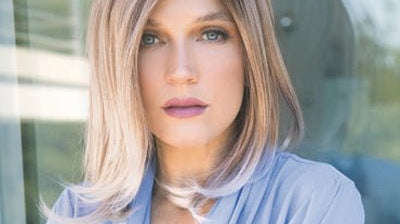Wig Studio 1 News
Filter by
All
#blogs
#crazywiglady
#crazywiglady #platinblonderooted
#ellenwille #blogs
#ellenwillesunset
#frostyblondeHL
#heatfriendlysyntheticwigs
#humanhairwigs
#jonrenauwigs
#keepingyourwigfresh
#lacefrontwigs
#lana
#newwigstyles
#travelingwithwigs
#tressallure
#wearingwigsattheairport
#wigfaqs
#wigs
#wigsize
16H
2 new styles
3 new styles
4 new styles
5 new styles
Acceptance
accessories
acrylic
adhesives
adjustable cap
adjustments
advantage
age
aging
airport
Alopecia
Alopecia Wigs
alternative hair
AMARA WIG
amber rock
american cancer society
amore
amorewig
amorewigs
asymmetric
autumn
AVALON WIG
awareness
backup
bald
baldness
bamboo caps
bands
bangs
barrettes
basic cap
bathing cap
bathingcap
be kind
beach
beat the heat
beautiful
Beautiful illusion topper
beauty myths
belle tress
belle tress wigs
belletress
betty
big hair
bio hair
bio hair care
biological hair
black hair
blading
blended
blended color
blended shades
blog
blogger
blogging
blogs
blonde
blonde hair
blonde highlights
blonde roots
blonde wigs
blow drier
blow dryer
blue eyes
bob
bobbie pins
bobby pin
bold highlights
box hair
braiding
braids
brand
brands
breakage
breast cancer
breast cancer awareness
breast cancer awareness month
breathable wigs
british milk tea
british museum
brown eyes
brown hair
brunette
budget
business
buy
buy a wig
buying a new wig
buying a wig
by pass
Caelen
caliente wig
cameron lite wig
cancer
cap
cap construction
cap liner
cap security
cap size
cap style
capless
caps
carrie lite wig
ca[
center part
Challenges
change
change your look
charity
chich
china
choosing a wig
choosing the right wig
christmas
circumference
classic cool wig by raquel welch
clean wig
cleaning
clearance
clearance wigs
clearane
clients
clips
clothes
clumping
co-workers
coating
collapsible
collapsible wig stand
collapsible wigstand
colleugues
color
color change
color range
color wig
color/shade
color/tone
colored roots
colorful wigs
coloring
colors
comb
combing
combs
comfort
comfortable
comments
communication
complexion
compliment
compromise
concerns
condition
conditioner
conditioning
confidence
confident
cons
construction
consultant
cool
cost
country
covering hair
crave the wave topper
critiques
crowd pleaser
crown
curlers
curly hair
curly wig
curves ahead
customer service
cut
cute
cute wigs
cuticle layer
damaging hair
damp hair
dance till dawn
dark hair
dark roots
dating
davings
dermatologist
detangler
Detective
difficult
dirty dozen
dissappointed
DIY
Don't give up
donate
donate a wig
dos and don'ts
doublemonofilament
doubt
dress
dry
dry scalp
dry shampoo
ear tab
easipart
eat to ear
educate
Egypt
Egyptian wigs
eighteenth century
elastic
elderly
elegant
ellen wille
ellen wille wig
ellen wille wigs
ellenwille
ellenwillewigs
embrace gray
emotional impact
emotions
england
escape
estetica
estetica designs
estetica jett
estetica smoky rose
exercise
expectations
extensions
face
face shape
face structure
facebook
facebook group
facebook poll
facing fears
fair fashion
fake
fake looking
fake wig
fall
family
fashion
fashion forward
fears
fears behind
fears of going gray
feel right
feelings
ferrara
fiber
fibers
find the right wig
finding a wig
finding the right style
finge
first wig
fit
flat
flat colors
flattering
flexibility
forever chic
france
freedom
friends
fringe
frizz
front lace
front lace wig
front to back
frustrated
fullness at the crown
fun
Gabor
gaborwigs
generation
german
get rid of the wiggy look
get to know your wig
giveaway
glue
going gray
going grey
good news
good quality
gorgeous gray collection
grace
gray
gray hair
gray shades
gray wigs
green eyes
grey
grey wigs
grief
grips
grow back
guilty
hair
hair braiding
hair care
hair color
hair expert
hair falling out
hair fears
hair fibers
hair helper
hair intervention
hair loss
hair loss fears
hair loss studies
hair power
hair products
hair pulling
hair rollers
hair shades
hair shape
hair spray
hair style
hair styles
hair stylist
hair texture
hair tips
hair tone
hair toppers
hair volume
hairdo
Hairdo wigs
hairdowigs
hairdresser
hairguide
hairhelper
hairline
hairloss
hairstyles
hairstylist
hand made
hand tied
hand tied wig
hand-tied
hand-tied wig
happy
HARPER WIG
head
head band
head measurements
head scarf
head shape
head size
head top
head wrap
headwrap
health
healthy hair
Heat Friendly Care Restoration
heat friendly synthetic hair
Heat Friendly wig
heat styling
heatfriendly
heatresistant
help
help others
helper hair
Henry Margu
Henry Margu 16H
holiday
holiday gathering
holiday season
holiday wig
holidays
hollywood
hot pink wigs
how it's made
how to
how to pick out a wig
how wigs are made
human behavioe
human hair
human hair blends
human hair wigs
humanhairwig
humanhairwigs
hurdle
illusion
in charge by raquel welch
india
inexpensive wigs
information
inspect
inspect a wig
inspecting wigs
intervention
intimacy
invest
investment
irritated
irritated scalp
It’s All About the Wig Cap
japan
jett
jett wig
Jon Renau
jon renau colors
jon renau lite
jon renau new
jon renau new colors
jon renau new styles
jon renau smartlace lite
jon renau topper
jon renau wigs
JR
judge
kaylee wig
Kendall wig
kiss
lace cap
lace front
lace front wig
lace front wigs
lace top
lacefront
layered style
layers
learning
learning about wigs
learning curve
length
less wiggy
life style
lifestyle
light hair
lighter lace front
lite
lite wigs
long hair
long hair wig
long layers
long wig
long wigs
longer hair
looking for a new style
loose curls
love
love your wig
low density wig
lucurious
luxury
maintenance
maisie
makeup
manufacturer
mariah
marriage
match your outfit
matching color
maya wig
measure head
media
medical treatment
medium length
mid-length
mid-lengthbuy
miranda lite wig
miranda wig
mirror
mission
Mistakes
mixed fiber wigs
modacrylic
model
modern
modern technique
modixx
modixx collection
moisturize
money
mono-part
mono-top
monofilament
monofilament part
monofilamet
moonlight grey
more wigs
most popular
multi-cultural
multi-tone
muse
muse by raquel welch
my discussions
natural
natural color
natural hair
natural hair line
natural look
natural petite
negativity
new
new collection
new colors
new jon renau
new jr
new look
new looks
new me
new style
new styles
new to wigs
new wig
new wig style
new wig styles
new wig wearers
new wigs
new year
newstyles
no hair
no rule
no visible part
non-wig wearers
noticeable
november
nylon
ocean
october
old age
old stlyes
old style
old styles
old wig
old wigs
older
older women
onda
open cap
open weft
open wefting
opinions
options
order today
overcoming challenges
overheat
pale grey
parts
party
partyallnight
past
pay
pay more attention
peace
perfect hair
permanent hair loss
permatease
permateases
permatese
personal
pick a color
picking out a color
picking out a wig
piemonte
pink collection
pink wig
pixie
pixie cut
pixie cuts
pixie style
platinum
playful
polyester
pool
popular style
porous fabric
portrait mode
positivity
power of pink
pre-order
prejudiced
preorder
pressure
pressure to be perfect
prevent hair damage
prfessional
processing hair loss
product
products
pros
Psychological Challenges
pulling my hair out
pulling out hair
pulls hair out
quality
quality wigs
questions
questions about wigs
quetions
quinn wig
raquel welch
raquel welch wigs
ready for take off
ready for takeoff
real hair
real hair wigs
real wig wears
receding hairlines
red
red hair
relationships
remy human hair
rene of paris
rescue wig
research
responses
reviving
reviving old wigs
rica
right style
rimini
rollers
romance
romantic relationships
roots
rules
RW muse
sale
salon
salt and pepper gray
saving money
saving time
savvy
scalp
scarf
scarves
sea salt spray
season
seasoned wig wearer
secret
secure wig
securing your wig
self care
self-esteem
senior
Sensitive Scalp
shaded cappuccino
shades of gray
shampoo
shamppo
shape
shaping
share
shine
shiny hair
shiny wig
shinyhair
shoes
shopping
short hair
short hair wigs
short wig
short wigs
shorter wig
shorter wigs
should i tell
side part
silicone based
silver
silver hair
size
size part
skill
skin tone
skylar wig
sleep with wig
sleeping with wig
smart lace lite
smartlace lite
smoky rose
social media
soft color
softies
solutions
spain
special occasion
spray bottle
spring
SS cappuccino
stay put wig grip
storage
store your wig
storing is clean
straight hair
stress
stress free
stress of wearing wigs
struggles
style
style and color
styledwigs
styles
styling
styling options
styling wigs
stylish wig
stylist
subtle pink wigs
suffering
summer
summer styles
summer wigs
summerwigs
sun hat
support
support group
sweet escape
swimming
swimming with wig
swiss lace
synthetic
synthetic fibers
synthetic hair
synthetic wigs
syntheticwigs
t-pins
tags
talking
tangling
tape
telling others
tension
textured hair
The Good and The Challenges
the group
therapy
thinning hair
thinning hair losing hair
three new styles
tight
time
tips
TLC
tone
too tight
top
top coverage
topics
topper
topper collection
topper size
topper styles
toppers
towel
travel
travel side conditioner
travel size
travel size shampoo
travel sized
travel sized products
traveling
traveling with wigs
trend alert
trend alert gabor
trend alert wig
Trichotillomania
Trichotillomania Wigs
trim hair
trim wig
trust
try a new wig
try out wigs
tSA
twix
two new styles
uncomfortable
upkeep
upstage
vacation
velvet
vendors
ventilating wig
vickie lynn
video
vintage wigs
virgin hair
volume
warm weather
wash
wash wig
washing
washing your wig
water
water & wigs
water activities
water and wigs
wave
waves
wavey hair
wavy
wavy bob
wavy hair
wavy wig
wear and tear
wearable
webiste
website
wedding
weft
wefted cap
wefting
weird hairstyles
wet wigs
what to say
where to start
which style
wig
wig 101
wig adhesive
wig bag
wig bands
wig basics
wig benefits
wig blog
wig blogs
wig box
wig boxes
wig brand
wig brands
wig brudh
wig brush
wig cap
wig caps
wig care
wig carrier
wig cercumference
wig challenges
wig choices
wig cinditioner
wig clips
wig coating
wig collection
wig color
wig colors
wig comb
wig comfort
wig cost
wig dating
wig discussion
wig diy
wig drips
wig education
wig experiences
wig fiber
wig fibers
wig fit
wig glue
wig grip
wig hair
wig hairspray
wig heads
wig inspection
wig journey
wig knowledge
wig length
wig liner
wig maintenance
wig measure
wig mistakes
wig part
wig pictures
wig pin
wig pins
wig products
wig questions
wig relationship
wig repair
wig rescue
wig research
wig reviews
wig romance
wig sale
wig scarf
wig security
wig shade
wig shampoo
wig shape
wig shop
wig size
wig spray
wig stand
wig storage
wig structure
wig studio 1
wig studio 1 blog
wig studio 1 facebook
wig studio 1 team
wig style
wig styles
wig styles on youtube
wig styling
wig support
wig tape
wig tips
wig topic
wig type
Wig videos
wig volume
wig washing
wig wearer
wig wearers
wig wearing
wig wears
wig wisdom
wig worry
wig wrap
wig-wearing
wigblog
wigconstruction
wiggy
wigMistakes
wigmodels
wigs
wigs at the beach
wigs autoimmune disease graves diease
wigs for older women
wigs vacation
wigstduio 1
wigstudio1
willow wig
winter
women
wonderful
wonderful styles
worry
wrap
young
younger
youtube
Get Rid of the Wiggy Look!
—
Vickie Lynn
(Wig shown above: PREORDER | Timeless Wig by BelleTress | Mono Part) Do you suffer from wig-itis? No matter what you do, you still think your wig looks fake. This...
Underneath the Pretty Hair
—
Andrea Carlson
(Wig shown above: UPSTAGE WIG BY RAQUEL WELCH) Most of us see what we are looking for; at first—the color of the wig, style, and length, and we imagine how it...
Confidence-Getting it or Getting it Back
—
Vickie Lynn
As I have written about in previous blogs, there is a psychological impact of hair loss, like any other loss, so I don’t want to make light of it, or...
It’s All About the Wig Cap
—
Vickie Lynn
As lovely as your wig may be, and as beautiful as you may look in that style and color, it’s not a great experience if your head is uncomfortable. Is...
What I Wish I’d Known
—
Vickie Lynn
I had that thought so many times, even if I didn’t say it out loud a hundred times during my wig journey. I polled our Facebook group of wig wearers...









